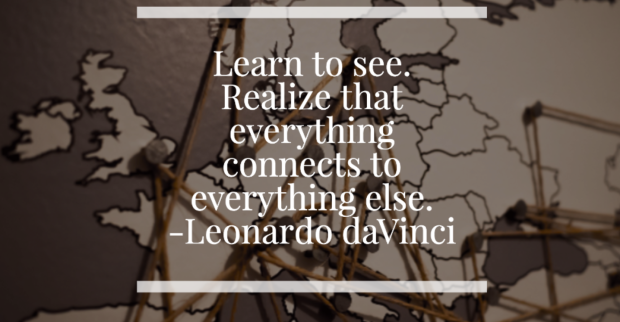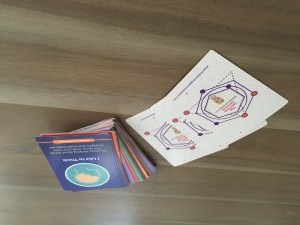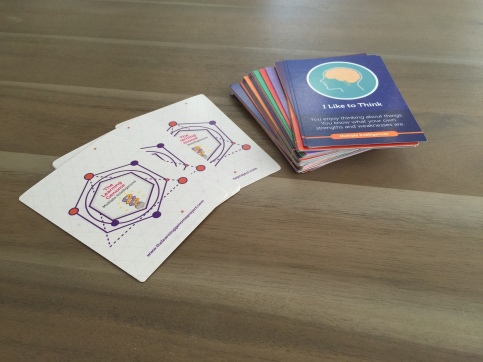Culture is often something that we talk about in education. Mostly we talk about building a “healthy” culture. Less often we talk about what that really means, and what it looks like, and how to do it.
It’s strange to me that something so fundamental to how a school runs gets so often overlooked. Or maybe it’s that we take for granted that it will just “be there.” Culture can just happen, but I would argue that it’s much better when it’s intentionally built. How do we do it? With so many different stakeholders in education, how do we truly build a healthy culture?
At Anastasis, our culture begins with students. Always. I know that every school claims this, but when we say that we start with students, I mean the actual students with names. When we talk about what we will look like, we talk in terms of the students in our school each year. Camryn. Dakota. Johnny. Kip. Bodie. THOSE students. We do it with them in mind. From there, we consider what it is that we want for those students. What is it that we fundamentally believe about them? What do we hope they will leave us with?
These are the 10 questions that we ask ourselves that inform our culture. Try beginning with these questions as a staff and see how the decisions you make together (and the culture you build) are transformed.
Question 1: What will we do here? This becomes our mission statement.
What we will do: Apprentice children in the art of learning through inquiry, creativity, critical thinking, discernment, and wisdom. Provide an education model that honors and supports children as the unique and creative individuals they were created to be.
Question 2: Who will we be?
Who we will be: A close community of learners that includes students of all ages, parents, teachers, and support staff. A culture that values unique individuals and fosters a love of learning, curiosity, critical thinking and discovery. A community that strives to show each other love, acceptance, and respect through attitude and service. A school that focuses on each student’s individual needs by creating a customized learning strand for each individual. A school that connects with other learners around the world, developing global citizens. A community (staff included) that is passionately curious, willing to learn, unlearn, and relearn. A school that utilizes the technology available to enhance learning. A staff that believes that learning happens within a student, not to a student. A place where learning is immersive, authentic, realistic, and connected. A place that goes beyond building self esteem to build self efficacy, learning with intent. A community of independent and resilient learners.
Question 3: How will we work?
How we will work: We will strive to serve students, to honor them as unique, creative individuals. Our interactions with students, families, and staff will be respectful and build trust. We will be learners. We will work toward a community and culture of respect, fun, and engagement. We will be fully alive. We will be creative. We will be curious. We will grow and evolve to meet the needs of students every day, month, and year.
Question 4: What will we value?
What we value: Freedom in learning. Getting our hands dirty, learning experientially. Play. Indulging our curiosities. Making mistakes and failing forward. Being open to other perspectives, views, and ideas. Independent thinking. Collaboration-connection is a multiplier. Being active. Learning without ceasing. Connecting dots (making connections within learning). Actively thinking about concepts (not just fact finding). Agility and spontaneity. Environment plays an important role in the learning continuum. Forward thinking pedagogy. Empathy and social compassion. Teacher as learners and learners as teachers. Humor and Lightheartedness. Tools that support learning. Being action researchers.
Question 5: What will we deliver?
What we will deliver: Students that are fully alive, who know their unique place in this world and know how their gifts and talents can be used to support a world that desperately needs their contribution. Passionate learners who have the ability and drive to spend a lifetime learning, unlearning, and relearning.
Question 6: What do we believe about achievement?
What we believe about achievement: It is complex and multifaceted. No one assessment can accurately measure it. It is individual. It is ABOUT and FOR the individual. It is fluid. It is boundless.
Question 7: What do we believe about learners?
What we believe about learners: Every child can learn. Every child has unique gifts and talents. Every child has a natural curiosity and an inclination to figure the world out. Every child learns in ways that are unique to them. Every child learns at their own developmental pace. Every child has an inclination to discover how the world works.
Question 8: What do we believe about personalization?
What we believe about personalization: We must be aware of student readiness-we want to present students with a task that is challenging for their current level of knowledge understanding or skill while providing a support system to bridge the gap. We must be aware of interest- linked to current student interests and helping the student discover new interests. We must be aware of learning preferences. We must be aware of the foundation-foundational knowledge and skills give us a strong base for new learning. We must help students discover new learning. We must vary the product or outcome that we expect of students in order for them to demonstrate understanding. We need ongoing formative assessment to drive new learning. We need to allow for flexible groupings so that students have a wide variety of opportunities to interact with a wide range of peers. We must emphasize individual growth and betterment of self instead of competition with others. We must partner together, taking advantage of other staff members strengths to support all students. We transfer ownership of learning from the adults to the students, a true apprenticeship. We must create flexible learning environments that meet the needs of a variety of postures of learning.
Question 9: Based on Questions 1-8, what will define our culture?
Our culture wil be: A place where all learners are safe to take risks. A place where students are encouraged to find answers from exploration and experimentation. A place where meaningful feedback is provided. A community where every student, staff and family member is part of the learning community. A place where we model persistence and talk about ourselves as learners. It’s okay not to know everything. A place where we set our eyes on what is possible and we encourage others to do the same. A place that is flexible, there is always more than one way to do something. A place where students develop empathy and fight their own battles. A place where the learning process can be “messy.” A place that takes into account student choice and preference. A place that helps students learn how to think, not what to think.
We will be intentional.
Question 10: Based on questions 1-9, what code will we live by?
The Anastasis Code:
We take care of each other.
If someone needs help, we give it. If we need help, we ask.
It’s all a gift. (No complaining, no complaining, no complaining.)
There’s glory in making a mistake. (Mistakes are teachers.)
Make the kind assumption. (When someone behaves poorly, give them the benefit of the doubt.)
No skunking! (Skunks spray negative energy when they are afraid. Don’t be a skunk.)
Respect each other. (Look at the person talking to you. Make requests in the form of a question, not a demand. Don’t interrupt conversations already in progress.)
Above all. We are a team. If the team isn’t healthy, nothing else can be.

Starting by asking and building around these 10 questions should inform EVERY other thing that you do. Everything matters. Everything reflects and indicates the culture that you have.
A few examples from Anastasis:
Announcing class placement for the year. Often schools send home a class placement list to parents. Kids anticipate class placement. This is a BIG deal to them. Why would we send a list to parents when we can unveil class placement and celebrate the unveiling with the students? We send out a balloon to each child with the name of the classroom teacher on the balloon. When the ballon gets blown up, the “team” they are on this year gets revealed. (We don’t call our classes by grade level, we call them by team name. Another small thing that reflects our culture. It all matters!)

Back to school night. Typically schools cram everyone into a hot room and give some sort of vision casting or announcements for the year. Then they break into classrooms so that parents can meet the teachers. Teachers go over classroom expectations. At Anastasis, we asked ourselves what one thing we want to accomplish so that by doing it, everything else in the year was made easier. Our answer: Build community. So, this year we sent out an invitation to our families. Pack a picnic. Meet us at a park. Every teacher hosts a blanket. Families and teachers get to know each other. We made up conversation prompts to add an element of fun and to take the pressure off of any introverts (i.e. me!) to get the conversation flowing. Not only do our teachers get to know our families better, the families also get to know the other parents in the class. We’ll toast the end of summer with a glass of champagne, give out all the same packets of papers we normally would, and cheers the start of a new school year.

School handbook. Let’s be honest, like 2% of families actually read this important document. It’s low. It’s generally boring. Instead of just sending a community handbook (we do that, too). We also send postcards throughout the year that have just-in-time information from the handbook. The week before Learner Profile meetings, we send a postcard that talks about Learner Profiles. The week before snowy weather, we send a postcard that tells families where they can learn about a school closure. Just-in-time bite-sized information. Who doesn’t love getting a postcard?

Professional development: Do you do the same thing you’ve always done? Or do you focus on building community and culture. Here are some ways we’ve done PD: Paddle boarding, happy hour.
The first week of school: Is it jump right in? Or do you take time to get to know your students and “detox” them from false labels they may be carrying about themselves and learning?
The small things really aren’t all that small. It all matters. Without starting from the question framework above, it’s hard to make decisions consistently that will ladder up to the “healthy” culture you are trying to build. Start with the 10. Be intentional about all of it.
P.S. By going through these 10 questions, you’ve also created your staff handbook. Anastasis Academy Teacher Handbook








